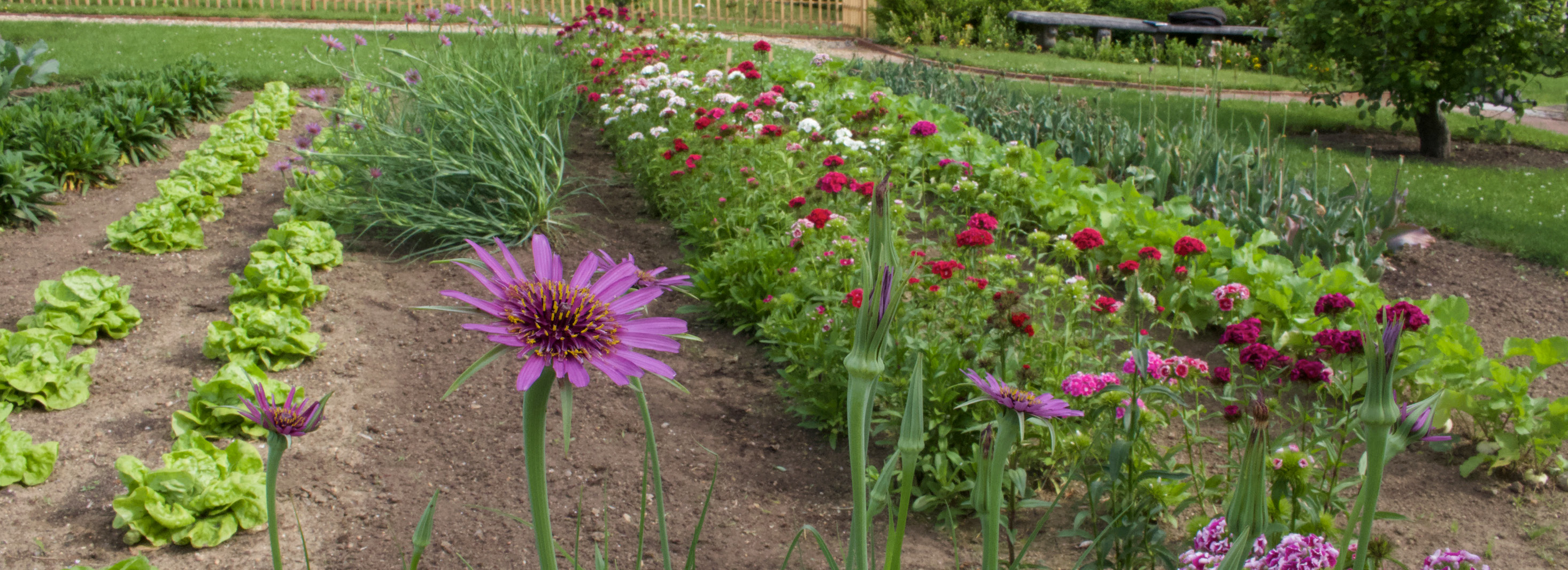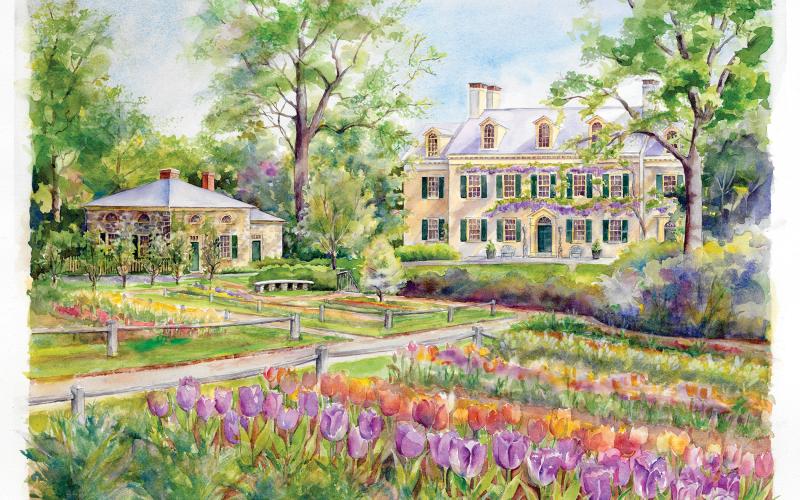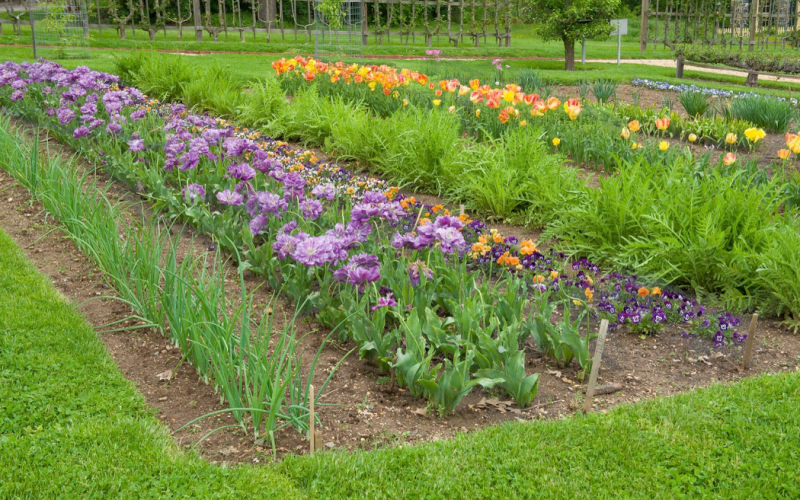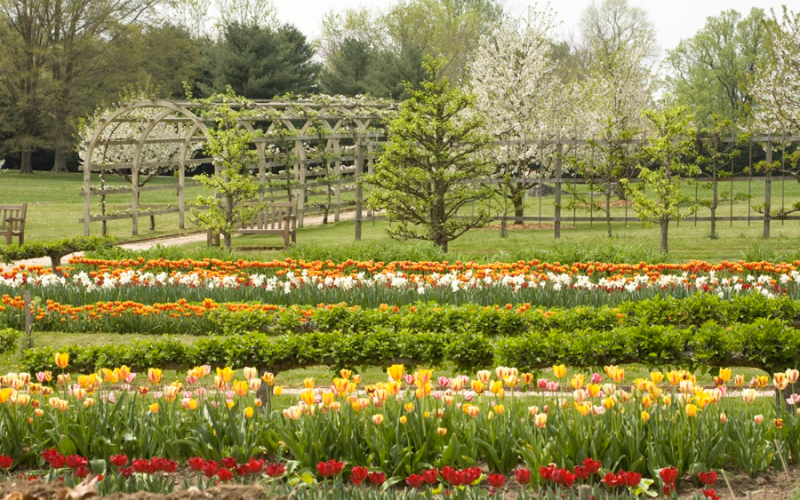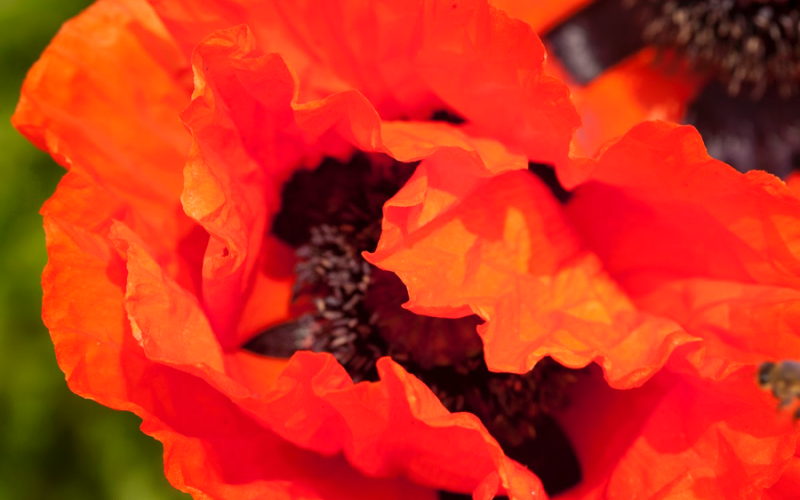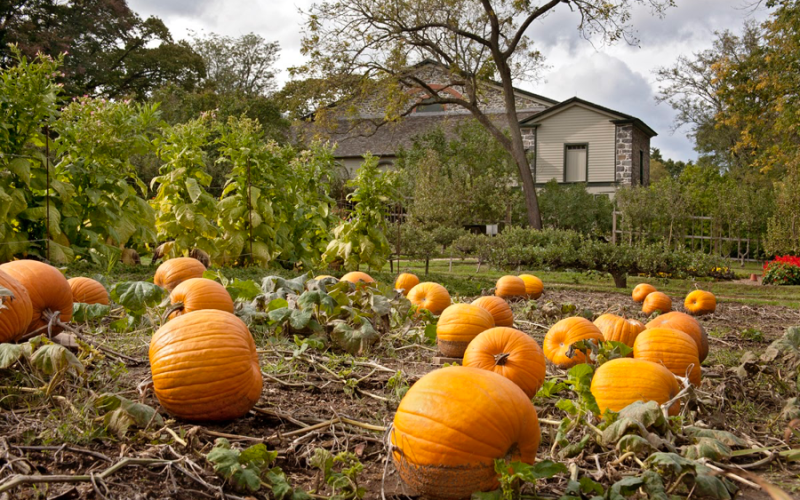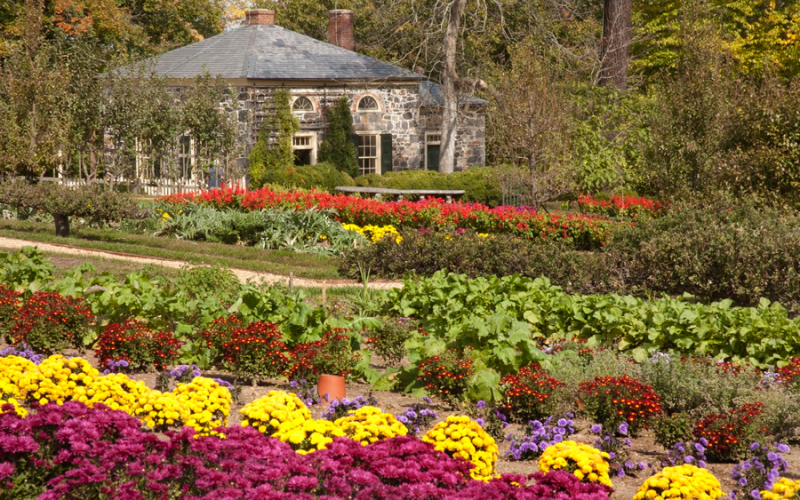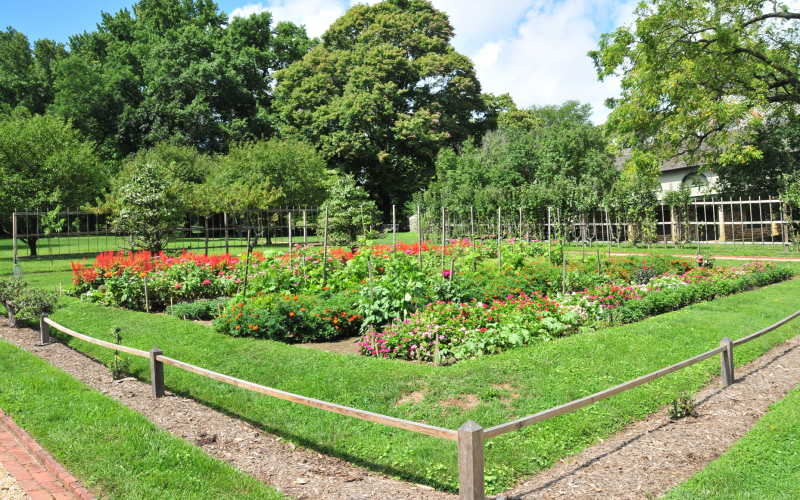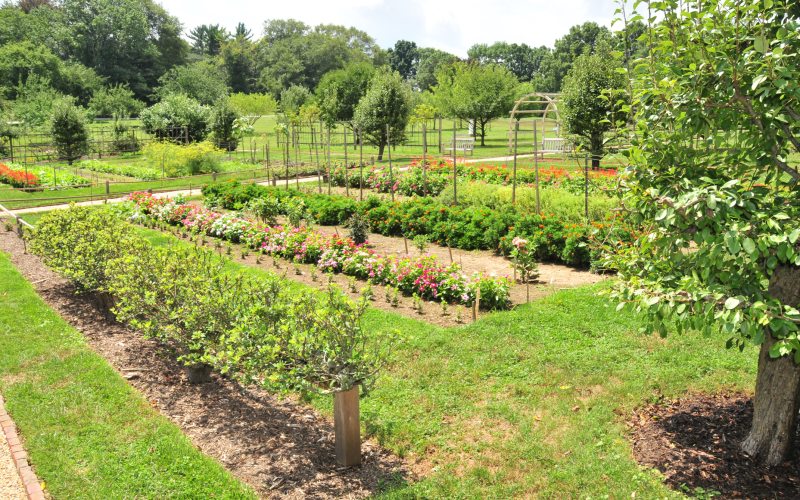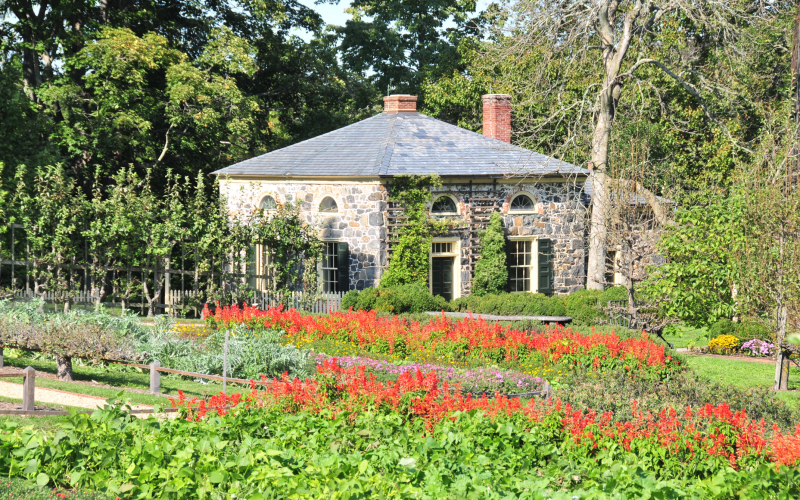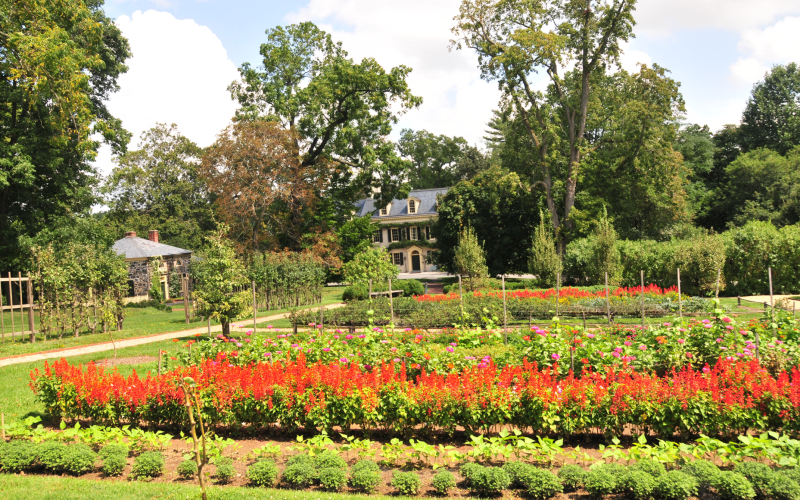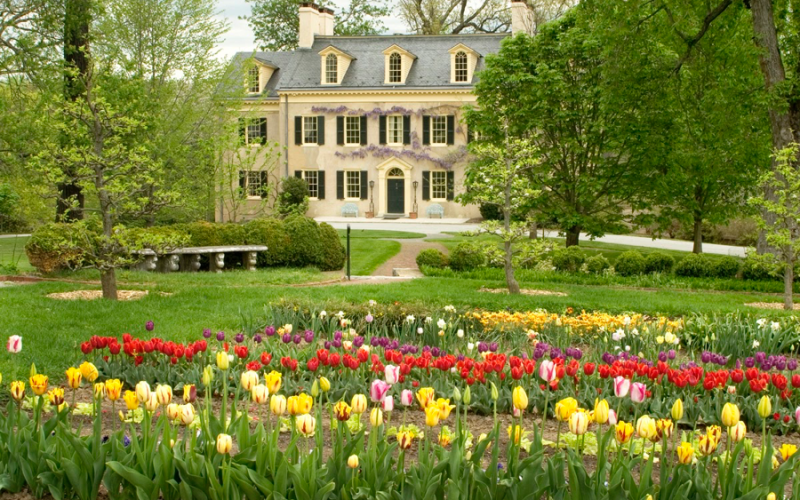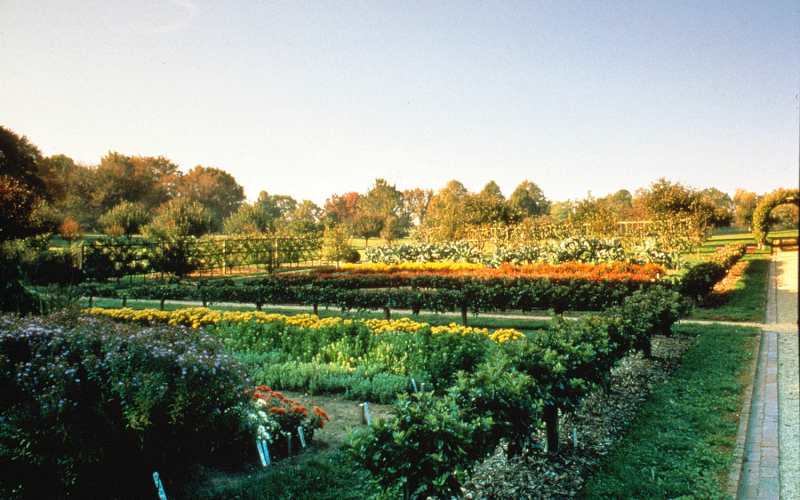•••
The Eleuthère Irénée (E.I.) du Pont Garden is located directly in front of the Eleutherian Mills residence – the ancestral home of the du Pont family. At just under two acres, the garden is easy to view and comfortable to walk, with a charm and character worth experiencing throughout the year. In winter, there is quiet beauty in the carefully laid out planting squares framed by gravel paths and bordered by bare-branched antique pear, apple, and peach trees. In spring, the garden takes on color as crocuses, jonquils, hyacinths, and tulips appear. Flowering fruit trees in the orchard just west of the garden expand the vista of spring blossom, while purple and white lilacs follow the curve of a stone wall that defines the lower end of the garden.
June brings the brilliant orange of the Oriental poppy (Papaver orientale), which, according to family tradition, E. I. du Pont introduced into America with seeds sent from Le Jardin des Plantes in Paris.
By midsummer the garden is in full color with nasturtiums, zinnias, and marigolds planted alongside heirloom vegetables. Of special interest are native cardinal flowers (Lobelia cardinalis), tobacco plants (Nicotiana sp.), and large-headed sunflowers rivaling a giant specimen grown by E.I. du Pont in 1823. Late summer is marked by the brilliant color of scarlet sage (Salvia splendens) and the dependable show of dahlias. In fall, chrysanthemums provide a final profusion of color before the harvest of apples and pumpkins.
The E. I. du Pont Garden was restored on its original site in the 1970s to reflect the period of cultivation during the era of E. I. du Pont, 1803-1834. A significant feature of the early garden was the border planting of dwarf fruit trees trained en quenouille, a style popular in France. Through specialized pruning and by tying branches down to stakes in the ground, a conical shape is achieved. The strong French influence is further reflected in the formal design of parterres and intersecting paths—a Renaissance garden element developed with practical utility in mind.
An experienced gardener from his youth, E. I. du Pont set about providing his family with fresh fruits and vegetables in the isolation of their Brandywine home. He planted his garden with fruit trees, nuts, berries, roses, and seeds of vegetables, flowers, and herbs shipped to him from France. To these he added indigenous American plants, naturalizing the property with wildflowers from nearby woods and exchanging plants with other pioneering horticulturists including Bernard McMahon.
After du Pont’s death in 1834, the garden continued to expand under the care of his eldest daughter Victorine and, later, his son Henry and his family. They occupied Eleutherian Mills until 1890.
One of Henry’s daughters sketched the garden as it appeared in the 1880s, which provided a template used in planning the restoration of the garden. Preliminary archaeology of the garden site began in 1968, with technical assistance from the University of Pennsylvania and the Archaeological Society of Delaware. The first significant feature identified was an old well, which dates from 1811. Subsequent excavations, completed in 1972, confirmed the location of paths, a drainage system, greenhouse, cold frame and summerhouse.
Correspondence, household account books, bills paid to nurserymen, and contemporary descriptions by visitors to the garden provided documentation for all of the plant material in the garden today. One of the richest sources of information is from the correspondence of du Pont’s three sons and four daughters, whose letters included frequent details of gardening activities. A plan drawn by E. I. du Pont in 1804 indicates the location of more than a hundred varieties of pear, apple, peach, cherry, and plum trees in the orchard, many of which are represented in the garden today. In keeping with garden practice of the early nineteenth century, flowers and vegetables are juxtaposed in the parterres creating both an aesthetically pleasing and utilitarian landscape.
The plan for the restored garden was drawn in 1972 by the locally renowned landscape architect, William H. Frederick. The ongoing care of this garden is provided through the Emily Tybout du Pont Memorial Endowment.

